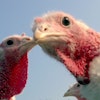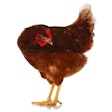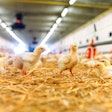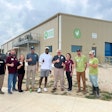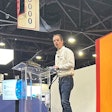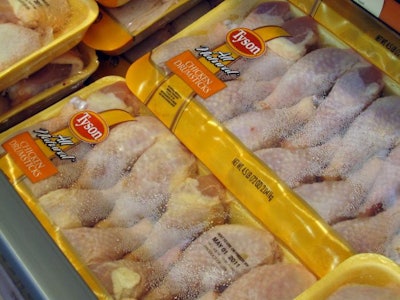
Following a disappointing first quarter for its chicken segment, executives from Tyson Foods spoke optimistically about making the operation more profitable.
For the first quarter of the 2023 fiscal year, Tyson Foods’ Chicken segment posted an operating income of $69 million, down from the $140 million recorded one year ago, despite having sales increase by 2.5%.
During a conference call when those financial results were announced on February 6, Tyson Foods CEO Donnie King, Poultry Group President Wes Morris and Chief Financial Officer (CFO) John R. Tyson offered their views on where the business unit has been, and where they expect it to be.
What didn’t go well?
King was quick to point out that the company was taken by surprise by some of the market dynamics during the quarter.
“For chicken, when compared to expectations from last quarter, a few different things didn’t go as planned. Most notably, demand didn’t appear in the parts of the market where we had expected. As a result, we had to move things around and we experienced higher cost, a lower price environment and knock-on effects from a network standpoint,” he said.
King said the company went into the quarter with “a good plan.”
However, the product mix strategy didn’t align with consumer demand, and strong competition from the beef and pork sectors – both in which Tyson is also a player – proved the plan was not fool-proof.
“The miss for us was clearly in our fresh chicken, our tray pack chicken at retail. That was where we stumbled. The demand for our branded retail products was very good, demand for our foodservice chicken products were all very good,” King said. “The thing that has exacerbated this was the amount of overall protein in the marketplace in Q1, beef, pork and chicken. While our harvest pounds were up 15%, remember that we are converting all those pounds into a boneless form. That’s different. That’s a mix shift and a strategy change as we get out of some of the more small bird, whole body, eight-piece type products.”
Change in leadership
King talked about the promising future of its chicken business, and the hiring of Morris as president of the segment as a key component.
Morris was hired on January 27 to succeed David Bray, who is no longer with the company.
“I talked about in Q1 that we had some issues as it related to markets and the amount of protein on the market,” King said. “The change that we made is a result of some of the controllables that I think we made some good decisions. I’d like to have seen those decisions faster and perhaps some better quality of decisions and there were things in Q1 as it relates to chicken that we could have done better. And I made the (personnel) change. I went out immediately and recruited Wes Morris. Wes has had has run many parts of our Chicken business. He’s led our Prepared Foods business, and he’s also led our case-ready beef and pork business. And they had an opportunity to pick up a great talent with many, many years of experience and know-how in this business, and we made the change.”
Other changes in motion
During his prepared remarks, Tyson’s CFO explained part of the strategy to improve the chicken business segment’s fiscal performance.
“We see significant room for improvement in the long-term operating margin of our Chicken segment as there is still work to do to attain industry leading performance and we are optimistic it can be achieved due to the following: our diversified value-added portfolio with lower margin volatility, our brand strength with the highest consumer awareness and brand loyalty according to Nielsen data, our growth strategy, taking advantage of existing capacity, optimization of our portfolio by shifting from commodity to value-added products, and last, a further implementation of our productivity program as we ramp up more automation,” Tyson said.
Morris also spoke of special areas of focus already in place.
“We did a lot of foundational work and executed it very well. We said that we would improve our capacity utilization. We would staff our plants and they are at a record staffing level. We’ve added automation and got some opportunities as we start up that that negatively impacted our yield in Q1,” he said.
Morris also said its live operations are running properly, and the low-hatch rates and breeder fertility troubles that came to light in 2021 are in the rear-view mirror.
“We said we’d rebuild inventory post COVID to better service our customers and our order fill rate indicates that we did that well. And so, from a live perspective, we performed very well. The volatility of our hatch numbers are behind us, and we did exactly what we said we were going to do on the live production side,” Morris said. “That allows us to focus more of our energy on standing up that automation to its expected results, and to make sure we’re still meeting the needs of the consumer. But the one thing that’s obvious we can do better is understanding the consumer shifts in our business and making sure we got the right amount of birds in the right place at the right time.”


